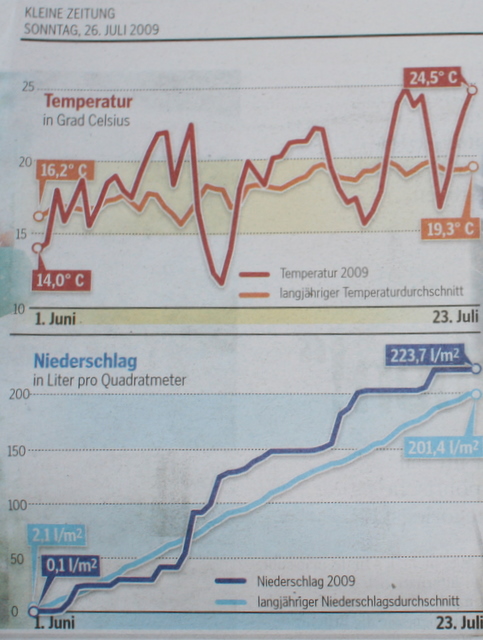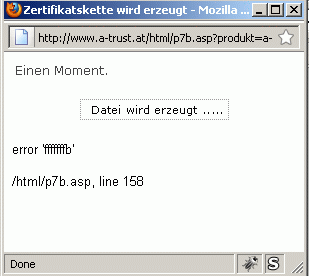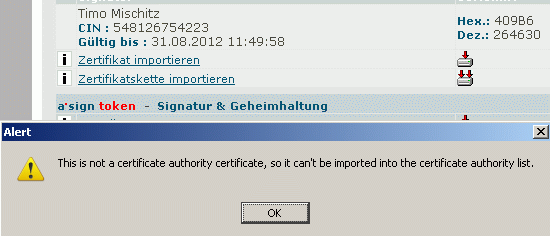Back from the summer vacation, Clemens demanded that we build some tracks. I obliged and he is now really pushing a train along the tracks.

Back from the summer vacation, Clemens demanded that we build some tracks. I obliged and he is now really pushing a train along the tracks.

Ken recently expressed doubts about the direction drinks is taking.
During a train ride last week I composed the following reply:
Newspapers often enough publish graphs which give wrong impressions on what the numbers behind the diagram actually mean. The usual culprit is a y-axis which does not start with 0, thus visually inflating any trend/changes in the data.
This week I stumbled upon something else:

The article was all about “Do we have to expect more extreme weather in the future thanks to global warming?”. The expert they interviewed kind of rejected the premise that we can deduce anything from one year’s weather. But they wanted to have a scary graph in the article, so they came up with this one.
So what’s wrong? If you compare the temperature and precipitation graphs of one year with the long-term averages, then it’s almost a given that the current year will look more extreme than the averages.
The comparison might make sense if you argue that 2009 is colder/warmer/wetter/dryer than the average year, but for comparing weather variance, this is completely worthless.

This might be of broader interest to users or RT:
I recently hacked up a small Scrip that tries to merge new tickets generated by mail bounces into the original ticket.
This is similar to what RtBounceHandler is doing, just that it’s implemented as a scrip and not as an external program which runs on incoming mail.
I’ve added my code to the RT wiki.
Um sein Geschäft mit X.509 Zertifikaten anzukurbeln, schreibt er eine Pressemeldung, die auch prompt von der Fuzo übernommen wird.
Es scheint um X.509 Zertifikate für SMTP/STARTTLS zu gehen, also die Verschlüsselung des Transportweges beim Mailversand.
Was ist da dran alles falsch?
The idea for this one was to build a spiral and then use the bridges to connect the ends together.
I’m usually a quite peaceful guy, but whenever I need to interact with an A-trust product or their website, I get this urge to kick someone.
Hard.
In this case I wanted to send an encrypted mail to an user of the Austrian Citizen Card. For that, I need the X.509 cert for that person.
The first obstacle was the non-graceful degradation of the a-trust website if you have disabled javascript (or, in my case, use NoScript in Firefox). Okay, once I cleared that hurdle, I got a list of 6 or 8 keys for my recipient. The list doesn’t show which keys are ECC and which are RSA, and trying to download them gave me:

for single certs and

for chains.
Good work, folks.
Sometimes, I just make simple ones like this:
The company laptop (Windows XP) of my wife came with the Broadcom software for controlling the Wifi settings.
I’ve already had so many troubles getting that box to talk WPA to my local WLAN at home (an OpenWrt Kamikaze running on an Alix box) that I switched back to WEP.
Last week I tried to get the Broadcom junk to talk WPA to the Linksys ADSL/WLAN CPE at my mother’s place. No go. Just once, for a few seconds it managed to get the TKIP key. Most of the time it failed to negotiate an AES key. Whatever.
I’m so glad I convinced her tech department to give us local admin rights. That way I finally just nuked that dysfunctional piece of sh*** and went back to the default Windows WLAN configuration tool.
That just worked.
Instantly. No hassle at all.